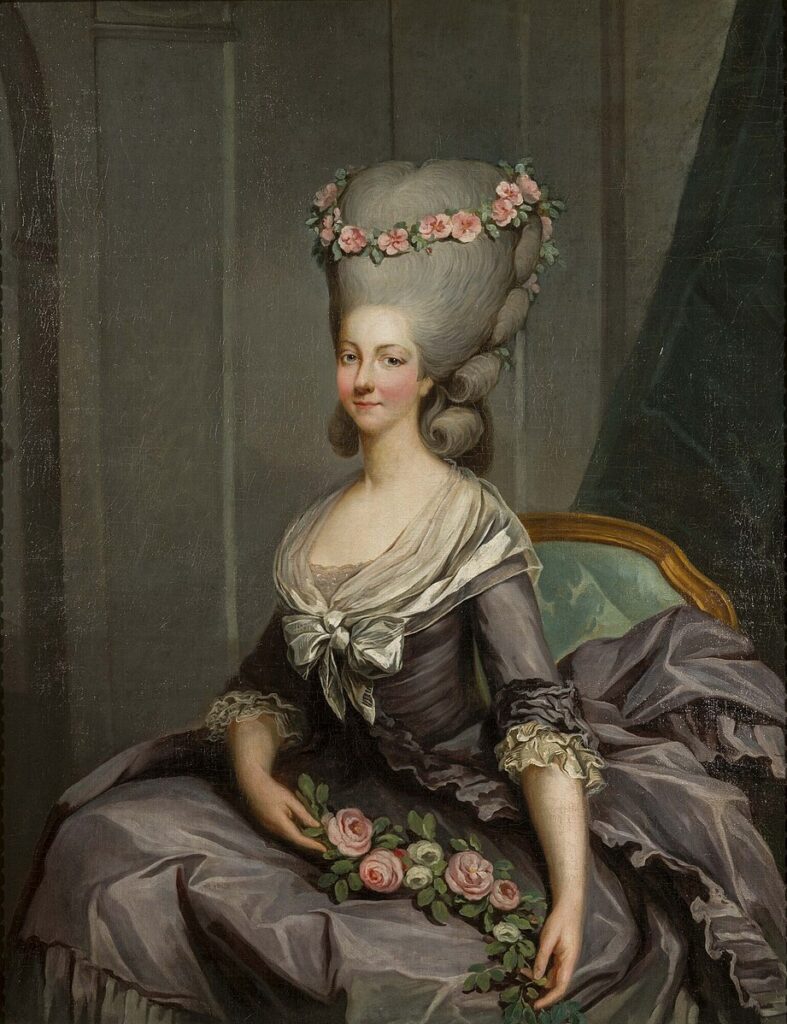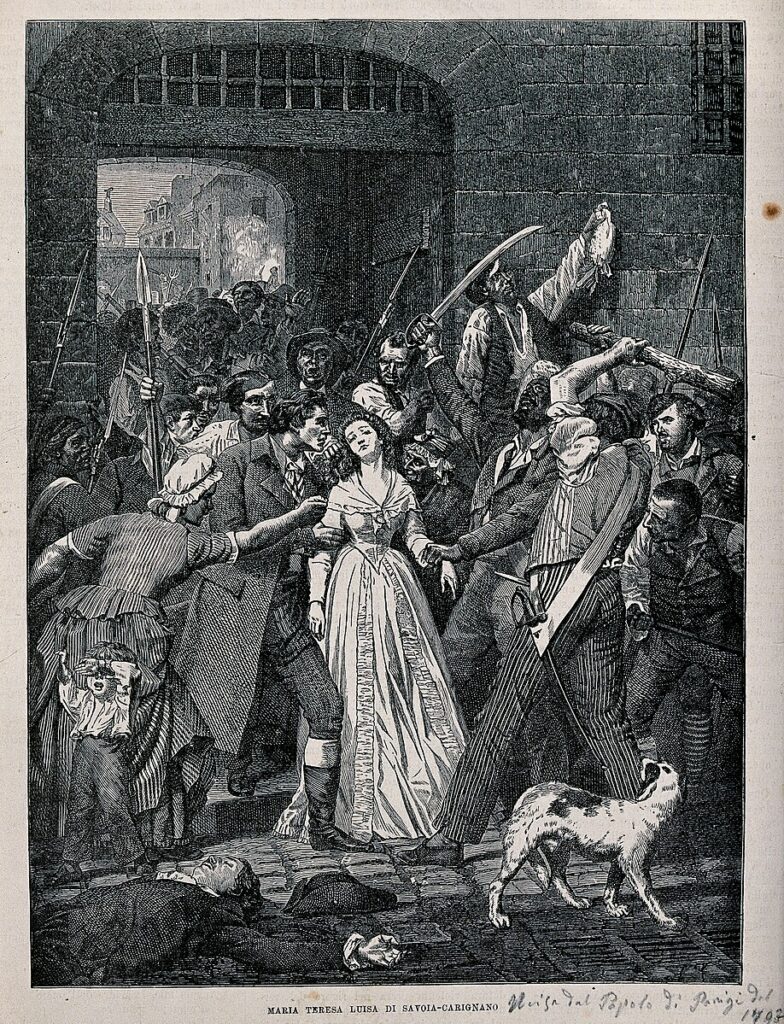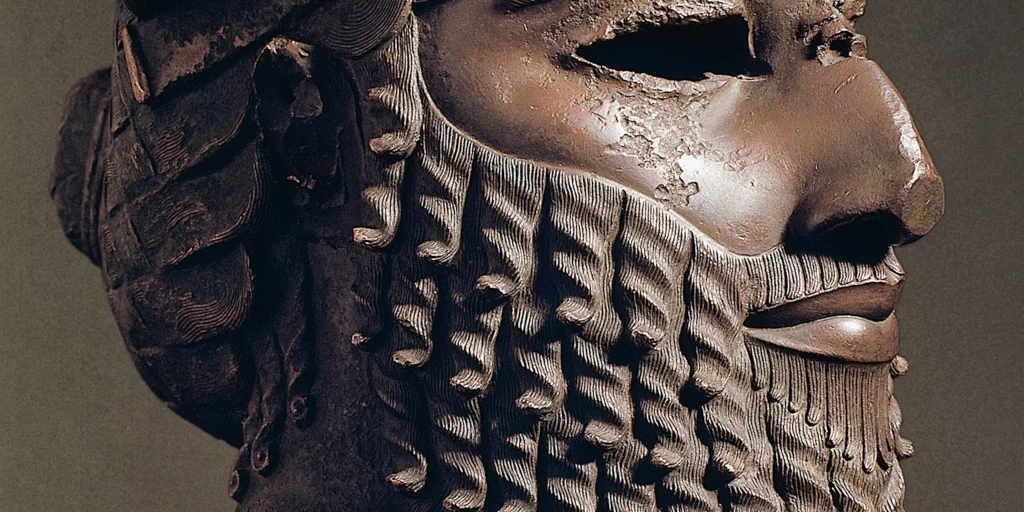Marie Therese Louise did not meet Marie Antoinette until she was married at the age of seventeen to the Prince de Lamballe.
She was already a young widow by the time she met the young Dauphine, Marie Antoinette. The two became fast friends and confidants and the Princess de Lamballe was made superintendent of the queen’s household.
The two women might have grown old together, but the social fabric of France was tearing at the seams. By August of 1792, Marie Therese Louise was beheaded and her severed head was paraded before the windows of the queen.
The story of the friendship shared by these two women has long been upheld as one of the most poignant and humanizing tales to come to life during the gory French Revolution. This was during a time when the monarchy was dehumanized by the population. Social unrest was tearing France apart.
But the tale of the friendship between Marie Antoinette and the Princess de Lamballe offers a human note of pain and sadness that cannot be found in other aspects of the French Revolution’s history.

A Short Marriage and Becoming the Princess de Lamballe
Marie Therese Louise was born in 1749 in Italy. She was the daughter of Prince Louis-Victor de Savoie-Carigan. She was one of nine children in the family.
Such a large family necessitated support through good marriages, and in 1767, she was married by proxy to Louis Alexandre de Bourbon-Penithievre. Louis was a legitimized grandson of Louis Alexandre de Bourbon. This made him an excellent catch for a member of Marie Therese’s family.
The match was a success at first and was looked on with favor by everyone at the court. However, the success of the marriage was undermined almost right away when Louis took up with numerous actresses.
His attraction to these other women would lead to his death one year into the marriage. He likely died of venereal disease.
Left as a wealthy widow at such a young age, Marie Therese was originally overwhelmed and asked to join a nunnery. However, her father-in-law persuaded her to stay at court as the dowager Princesse de Lamballe.
Marie Therese and her father-in-law became quite close. She used her influence to work on various charitable projects. She was referred to as the Angel of Penthievre due to her penchant for helping others.
Meeting Marie Antoinette
The Princess de Lamballe did not meet Marie Antoinette until 1771. Through the years after his husband’s death, she carefully eluded other suggested potential husbands and stayed very involved in life at court.
She attended court as a hostess for her father-in-law, and she was often seen at balls held by Madame de Noailles. Madame de Noailles hosted these parties in the name of Marie Antoinette. This made a meeting between the two women inevitable.
Marie Therese’s sweet and amiable nature was the natural complement to Marie Antoinette’s rather vivacious and wild personality. The two quickly became inseparable, and the gossip section of the paper often mentioned that the two women were scarcely ever seen apart.
It would have been hard for Marie Antoinette to find another friend so acceptable due to her rank. It was fortunate that the women got along so well.
When Marie Antoinette’s husband ascended to the throne in 1774, there was never a question that Marie Therese would come along with the household. She was appointed the superintendent of the Queen’s Household. This was the highest rank possible for ladies in waiting at Versailles.
This appointment was not without controversy, however. There was plenty of gossip about the inequitable nature of this appointment. The post was vacant for more than thirty years because the position was not necessary and it was expensive to maintain.
Marie Therese was also regarded as far too young to execute the duties related to the position, no matter how well-liked she was at court.
Rumors and Ill-Intentions
After the appointment, Marie Antoinette became even more isolated from the other members of the court.
She was much younger than many of the other wealthy women that she spent time around at balls and social gatherings, and she was often gossiped about in unfavorable terms. She clung to her friendship with Marie Therese as a bright spot in her otherwise rather boring and sometimes uncomfortable days as the Queen.
Various ambassadors and advisors pointed out to Marie Antoinette that her friendship with Marie Therese was a source of resentment and dissension. She was told that she should make an effort to refrain from spending every moment with the other young woman to avoid angering other important members of the court.
It seems likely that this advice fell on deaf ears as the two young women continued to spend nearly every moment together.
By 1775, Marie Antoinette’s now-famous sense of wildness and her fanciful nature began to drive a wedge between herself and Marie Therese. A new arrival at court, Yolande de Polastron, the Duchesse de Polignac, began to supplant Marie Therese in the queen’s favor. Yolande claimed Marie Therese was a bore, and Marie Therese did not approve of Yolande’s wild streak.
Despite challenges of this nature, Marie Therese was the person that Marie Antoinette called to her side when Marie Antoinette’s mother died. She was also the friend who Marie Antoinette confided in as the changing social strata at court continued to worry her and make her feel inferior.
So close were the women despite the trouble with Yolande, that rumors circulated that Marie Therese had been sent to England to spy for the queen in 1787.
The truth of the matter was that Marie Therese had gone to England in 1787 to attempt to find a cure for her health by taking the waters in Bath. Always of a “delicate” nature, her health had become such that she was often unable to perform her duties to the household.
Perhaps it was her ill health that caused the friendship to fracture before the opening days of the revolution, or perhaps the two women had just begun to grow apart.
Whatever the reason was for the distance between Marie Therese and Marie Antoinette, when the revolution broke out, Marie Therese was in Switzerland rather than by Marie Antoinette’s side.
The French Revolution and Trouble to Come
To Marie Therese’s credit, when she heard the news about the revolution, she returned to her friend’s side. She resumed the duties of her office, seeking to create a sense of normalcy amidst all of the chaos of the opening days of civil unrest.
Historians often ponder what might have become of Marie Therese if she had stayed away from France for her safety. Surely the outcome of her sad story would have been much different had her loyalty to the queen not brought her back to France.
Aware that the social tide was changing and that there was rising hatred for the monarchy, Marie Therese quickly began hosting lavish entertainments in an attempt to allow the queen and king to win over nobles to the cause of the Bourbon Monarchy.
Her apartments were rumored to be the location of political meetings with Mirabeau, among others. She was also known to investigate the loyalty of courtiers through a network of informers that she kept on a tight leash.
Marie Antoinette urged her friend to think of her safety. She was worried that her friend’s highly visible position would earn the ire of the rising nationalistic tide that hated the monarchy. Marie Therese would not be dissuaded in her efforts on her friend’s behalf, and so she continued her work to protect the monarchy.
Despite their close friendship, Marie Antoinette did not dare tell her friend about the planned flight to Varennes to escape Paris. Other than a cryptic remark the night before the royal family fled the palace, she did not tell Marie Therese that they were going to leave the city.
Marie Therese woke to find the royal family gone from the palace, but Marie Antoinette left her friend a letter telling her to meet them in Brussels. Marie Therese did not go to Brussels, however, and instead made her way to Great Britain, back to Bath.
She wrote her will and waited to see when it would be safe for her to head back to France to the queen’s side. By 1792, when the social unrest had quieted some, she returned to France and resumed her duties.
She wrote letters to the emigres, asking them to return to court to support the royal family again. She also began tracking the movement of important people responsible for the revolution, hoping to secure information that would allow the royal family to return home again.
Marie Therese remained loyal to the queen throughout various dangerous and frightening experiences, such as the attack of a mob on the palace in June of 1792. She was at the palace when it was attacked again in August, leading to the royal family fleeing to the legislative assembly.
She even fell ill during their exile from the palace and convalesced at a convent, only to return to Marie Antoinette’s side as soon as she was able.
Imprisonment and Death
In August, Marie Therese, along with various other nobles, was taken away from the royal family in their cell and imprisoned in La Force prison.
They were all tossed into the same cell, which would eventually also house some of the queen’s servants. Surely the small group of people who were loyal to the royal family must have known that nothing good was to come. But they had dodged the guillotine before, and they might have held out hope.
Sadly for Marie Therese, her loyalty to the queen would be her demise.
In September of 1792, Marie Therese was taken into a courtyard with the rest of the prisoners from their cell. She was asked to swear an oath to liberty and equality and to swear her hatred of the monarchy. She refused.
They led her from the courtyard to the yard where a massacre of other nobles was taking place. She was stabbed to death by the crowd, and her head was hacked off and attached to a pike.
The stories about what was done to her head and body vary. It’s likely that they were paraded around town and that the crowd took her head to the Palais-Royal. It was later paraded past the prison cell where the queen waited for her death at the hands of the mob.
Marie Antoinette would outlive her husband and her best friend, falling prey to the guillotine in 1793.

Loyalty in the Face of Terror
While the written record differs about the actual nature of the relationship between Marie Therese and Maria Antoinette, their lives were full of rumors that tarnished the nature of their friendship.
For years they were accused of being lesbians and consorting with one another. The wisdom and loyalty of Marie Therese’s guidance to her friend, the queen, was often downplayed by contemporaries at court.
What does stand out about the relationship between the two women, above all else, is that Marie Therese was loyal to a fault.
On many occasions, she could have refused to return to court, but she always came back to her friend’s side to support her and to try and help her to keep her crown and her head. Despite the conflicting stories about the relationship between the two women, there is no doubt that Marie Therese was a very loyal friend until the very last days of her life.
If nothing else is remembered about Marie Therese’s life, her loyalty in the face of terror should be commended.
There were few people in France during the revolution who stood by the monarchy until the end, and Marie Therese was one of the few nobles who refused to abandon the royal family when things became truly dire.
References
“Lamballe, Marie Thérèse Louise Of Savoy-Carignano, Princesse De (1749–1792).” Historic Extra.com, https://www.encyclopedia.com/women/encyclopedias-almanacs-transcripts-and-maps/lamballe-marie-therese-louise-savoy-carignano-princesse-de-1749-1792. Accessed 9 Apr. 2023.
“Marie-Antoinette.” Britannica.com, https://www.britannica.com/biography/Marie-Antoinette-queen-of-France. Accessed 9 Apr. 2023.
“Marie-Thérèse-Louise de Savoie-Carignan, Princesse de Lamballe.” Brittanica.com, https://www.britannica.com/biography/Marie-Therese-Louise-de-Savoie-Carignan-princesse-de-Lamballe. Accessed 9 Apr. 2023.
Mehl, Scott. “Marie Therese Louise of Savoy: Princess de Lamballe, Favorite of Queen Marie Antoinette of France.” Unofficialroyalty.com, https://www.unofficialroyalty.com/marie-therese-louise-of-savoy-princesse-de-lamballe-favorite-of-queen-marie-antoinette-of-france/. Accessed 9 Apr. 2023.
Steyn, Mark. “The Death of a Princess.” Steynonline.com, https://www.steynonline.com/8988/the-death-of-a-princess. Accessed 9 Apr. 2023.

